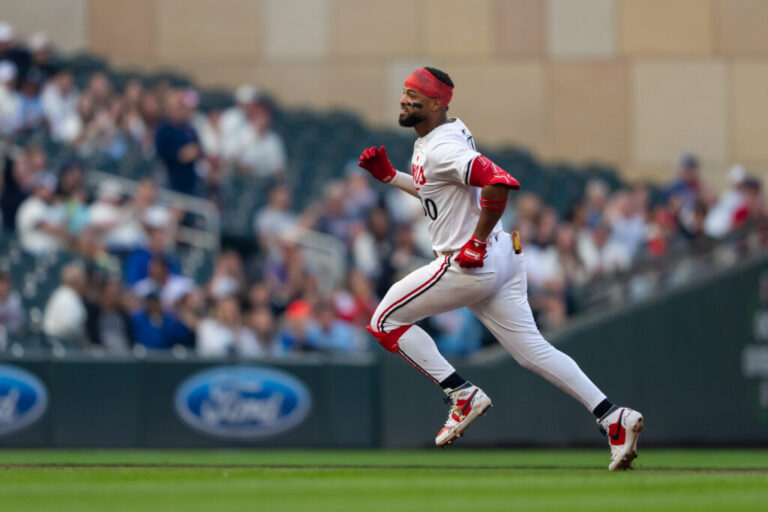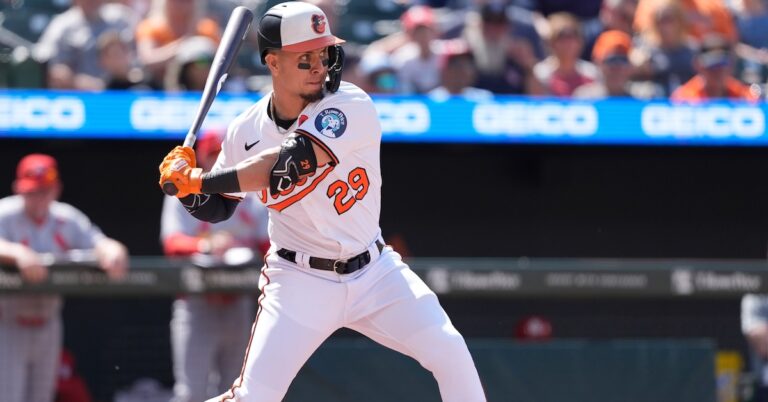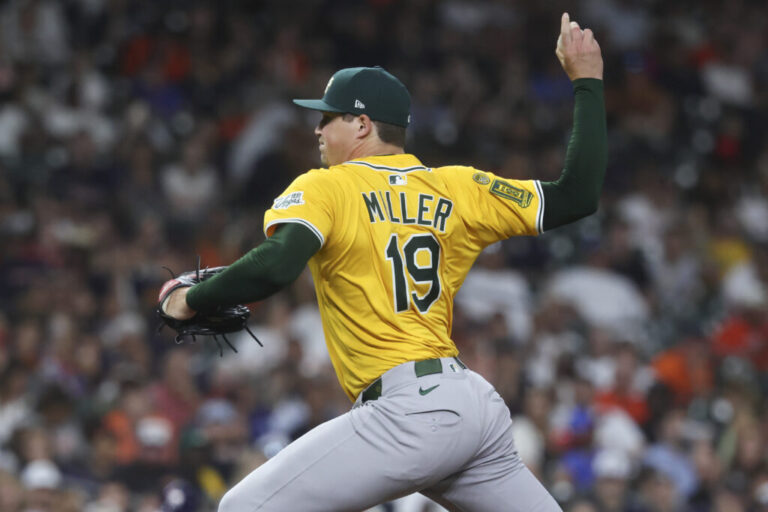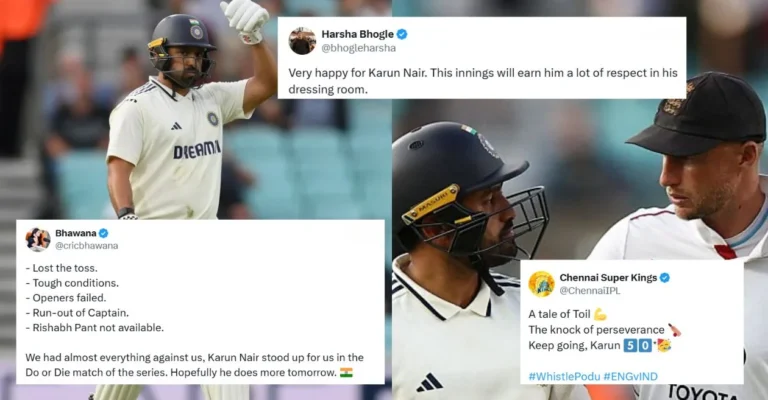

Below is an analysis of the prospects in the farm system of the Athletics. Scouting reports were compiled with information provided by industry sources as well as our own observations. This is the fifth year we’re delineating between two anticipated relief roles, the abbreviations for which you’ll see in the “position” column below: MIRP for multi-inning relief pitchers, and SIRP for single-inning relief pitchers. The ETAs listed generally correspond to the year a player has to be added to the 40-man roster to avoid being made eligible for the Rule 5 draft. Manual adjustments are made where they seem appropriate, but we use that as a rule of thumb.
A quick overview of what FV (Future Value) means can be found here. A much deeper overview can be found here.
All of the ranked prospects below also appear on The Board, a resource the site offers featuring sortable scouting information for every organization. It has more details (and updated TrackMan data from various sources) than this article and integrates every team’s list so readers can compare prospects across farm systems. It can be found here.
Other Prospects of Note
Grouped by type and listed in order of preference within each category.
High-Variance Guys
Jose Ramos, OF
Rodney Green, OF
Max Durrington, SS
Dylan Fien, C
Erick Matos, RHP
Clark Elliott, LF
Donny Troconis, RHP
Ramos signed for $1.2 million in January, but struck out a third of the time in the DSL. He’s a super speedy, lanky athlete who was likely always going to take a long time to develop. Green was the A’s 2024 fourth rounder out of Cal, where he had a career .946 OPS. He has above-average lefty power, but also hit tool question marks. Durrington is a lefty-hitting 17-year-old Australian shortstop with plus speed and below-average bat speed right now. Fien is a 6-foot-3 switch-hitting catcher who was signed away from UCLA for $550,000. He has a great athletic foundation and some of his swings are sexy looking, but he needs a ton of polish at basically everything. Matos is a projectable 6-foot-4 Cuban righty who signed for $700,000 in January. He sits 92-93 and struggled badly with walks during his debut. Elliott has struggled to get on the field since he was drafted in 2022 and hasn’t yet escaped A-ball. Like Green, the way Elliott’s hands work creates good power but also leaves him vulnerable to high heat, and as a left field-only defender, that doesn’t fly. Troconis is a raw, projectable 6-foot-4 19-year-old whose heater will creep into the mid-90s.
Tweeners
Davis Diaz, C/INF
Brennan Milone, 1B/2B
Brayan Buelvas, OF
Diaz is trying to walk the Dominic Keegan path, where he goes from being a vanilla Vanderbilt infielder to a legit catching prospect. He’s attempting a conversion and looked okay in Stockton at the end of last year. Eric was high on him in high school. Milone was the A’s 2022 sixth rounder out of Oregon. He’s a 40-grade 1B/2B defender who controls the zone well, but he doesn’t quite pack the home run punch you want out of someone with his defensive profile. Buevlas has 40-grade offensive tools and is a tweener defender.
Good Breaker or Good Changeup
Jacob Watters, RHP
Jackson Finley, RHP
Ryan Brown, RHP
Kyle Robinson, RHP
Micah Dallas, RHP
Watters, a 2022 fourth rounder from West Virginia, repeated High-A in 2024 and again had a bloated ERA, but his breaking ball is good enough to keep monitoring him. Finley barely pitched at Georgia Tech due to a surgery and the pandemic. He’ll touch 96 and show you a good sweeper, which wasn’t anything close to his pitch in college. Brown was Oregon State’s closer in 2023 but has been developed in a piggyback/swingman role so far in pro ball. He’s a loose righty wih a good changeup and a 91 mph fastball. A long, projectable right-hander who became a high profile guy at Texas Tech, Robinson lasted until the 11th round of the 2024 draft after an underwhelming year. Despite his height, he produces below-average extension in his delivery, which hinders his 91-94 mph fastball. Robinson’s best secondary pitch is his changeup, which has late depth, and also flashes a two-plane slider that he struggles to land in the zone with consistency. Did you mean, “Micah Parsons?” No, Bing. Dallas, a senior sign out of Texas A&M (three prior years at Tech) has a plus slider, but below-average other stuff and control.
Out of Control Velocity
Franck De La Rosa, RHP
Pedro Santos, RHP
Tyler Baum, RHP
De La Rosa is a 6-foot-8, 24-year-old Dominican righty who struck out 31.5% of the batters he faced in his 26 innings of work in 2024. He sits 95-97 and curbed his walks early in the season before regressing to his untenable career mean later on. Santos is 6-foot-4, 275 pound Cuban righty who works with downhill plane in the 95-98 mph range. He has 20 control. Baum was the team’s 2019 second rounder out of North Carolina. He’s become a mid-90s reliever with four pitches and poor control.
System Overview
This is an average farm system, maybe a shade below if you consider how shallow the 40+ and above FV tiers are as a group. Several key graduates from the last couple of years have begun to establish themselves at the big league level, some of them ahead of schedule. As this list was getting wrapped up, a scout source mentioned that what the Athletics and Nationals have done the last two years — where they’ve aggressively promoted their young players to the big leagues, and let them experience growing pains and adjustments — has made those teams a lot of fun to watch, and might thrust them back into contention sooner than expected. The emergence of Lawrence Butler and the growth of Shea Langeliers are the most notable A’s examples. Now, we’ll collectively look to Tyler Soderstrom, Ken Waldichuk, Darell Hernaiz, Zack Gelof, and others to exhibit growth like this, while Nick Kurtz and Jacob Wilson are likely to contribute pretty quickly as well.
The A’s will transition from “respectable” to “competitive” as fast as they can acquire and develop enough pitching to support the fun, young lineup they’ve got cooking (both their budget and ballpark situation make it unlikely they’ll sign impact free agents). While they have some solid mid-staff and lower-leverage options ready to contribute in 2025, there aren’t any mature high-impact arms here. Luis Morales might be a Yadier Alvarez sequel — he’s that raw — but his talent and potential for All-Star outcomes demand that he be stuffed on this list.
The A’s tend to be active in alternative spaces on the international amateur market. They tend not to commit their entire bonus pool to teenage Dominican and Venezuelan players and end up signing lots of Cuban, Taiwanese and Australian players, many of whom hit the market late. There are rumors they’re the favorites to sign Japanese two-way high schooler Shotaro Morii, who withdrew from last month’s NPB draft to pursue opportunities in MLB.
In the domestic draft, the Athletics have tended to target players from the western part of the country with their earlier picks and over-slot deals (Ontario has also been fertile). They’ve tended to receive bulk when making seller’s trades during this rebuilding era, often getting two or three players back whenever they make a deal. It has helped them climb from the very bottom of the farm system rankings up to what will probably be near the middle, all while the big league team gets more interesting. Letting William Contreras go to the Brewers in the Sean Murphy trade will be tough to live down, but things are looking up on the field in, uh, A’sville, wherever that is.





